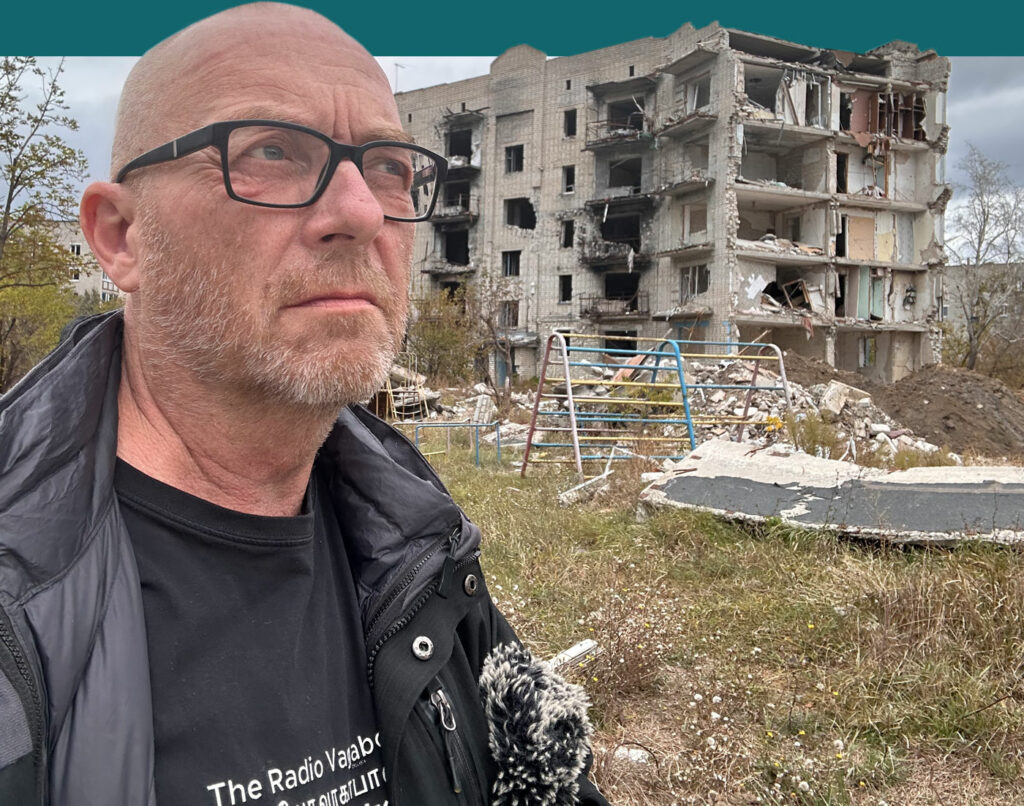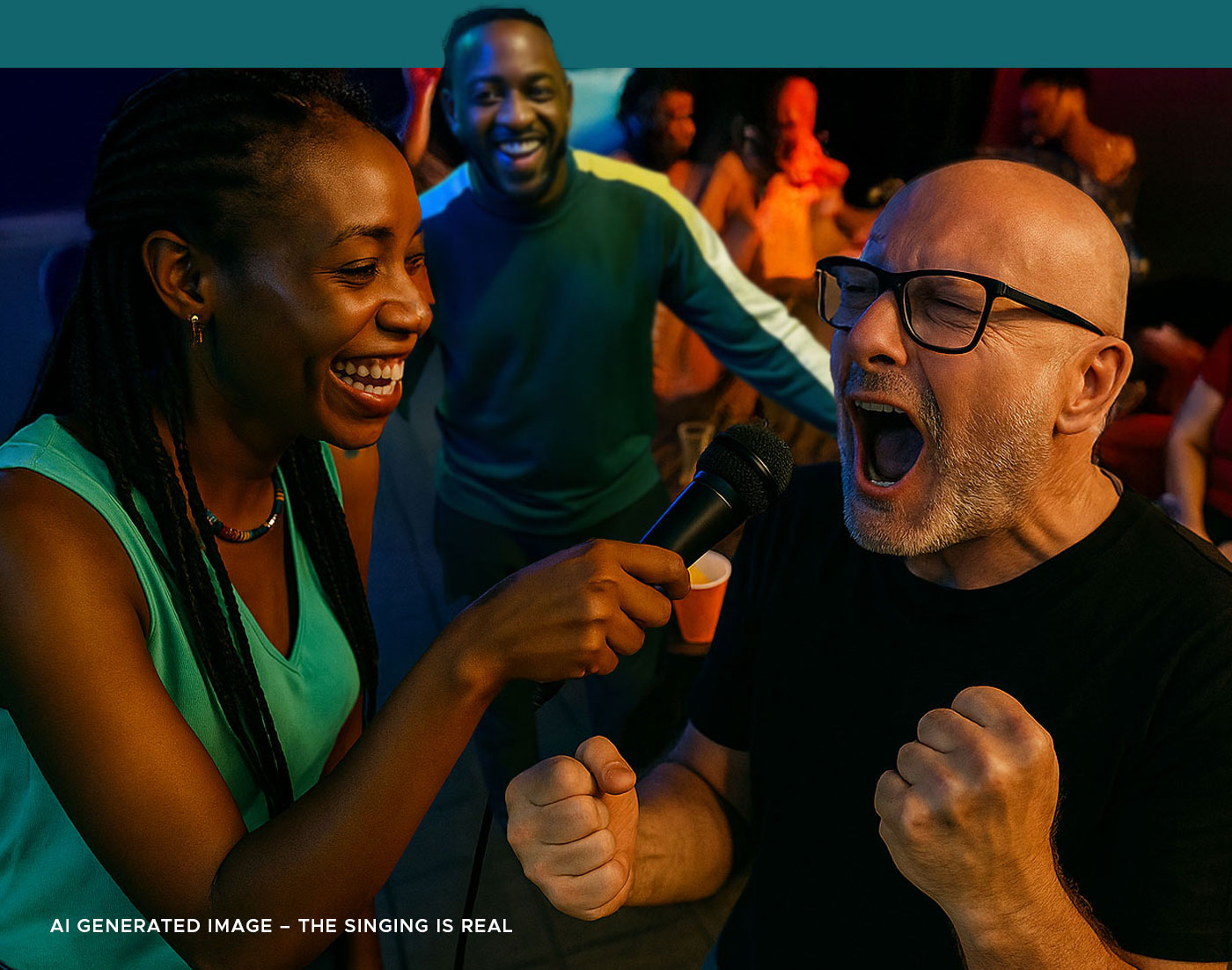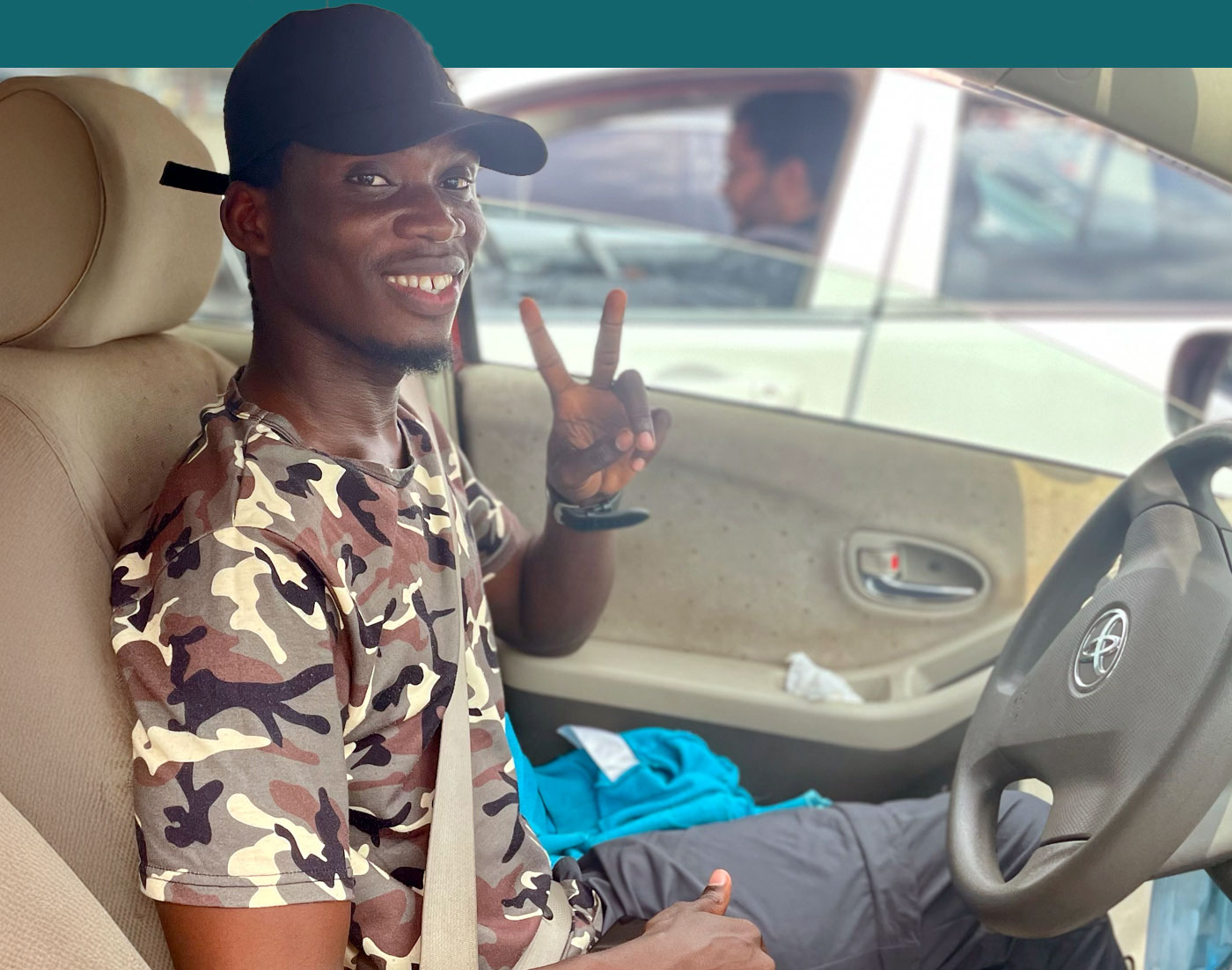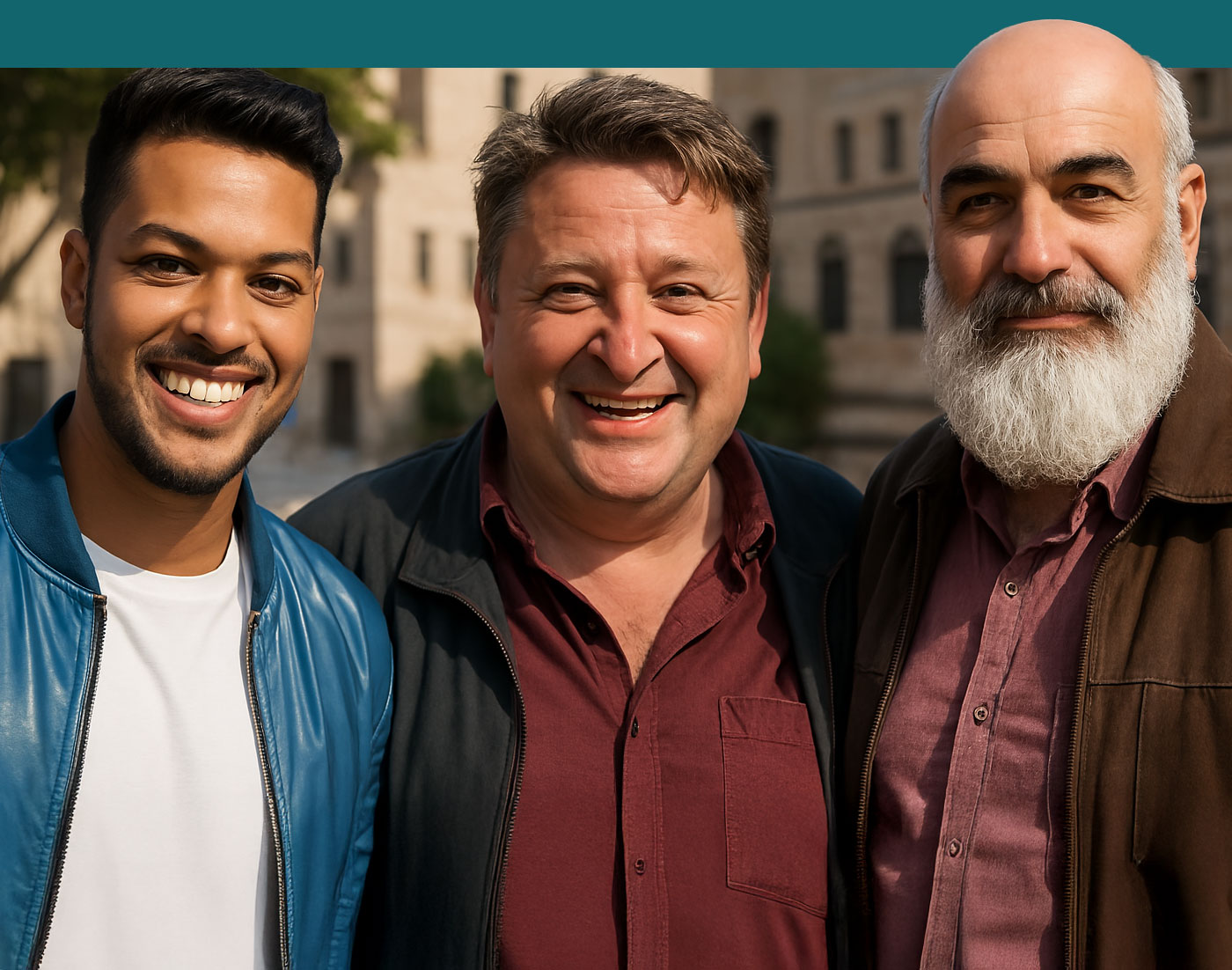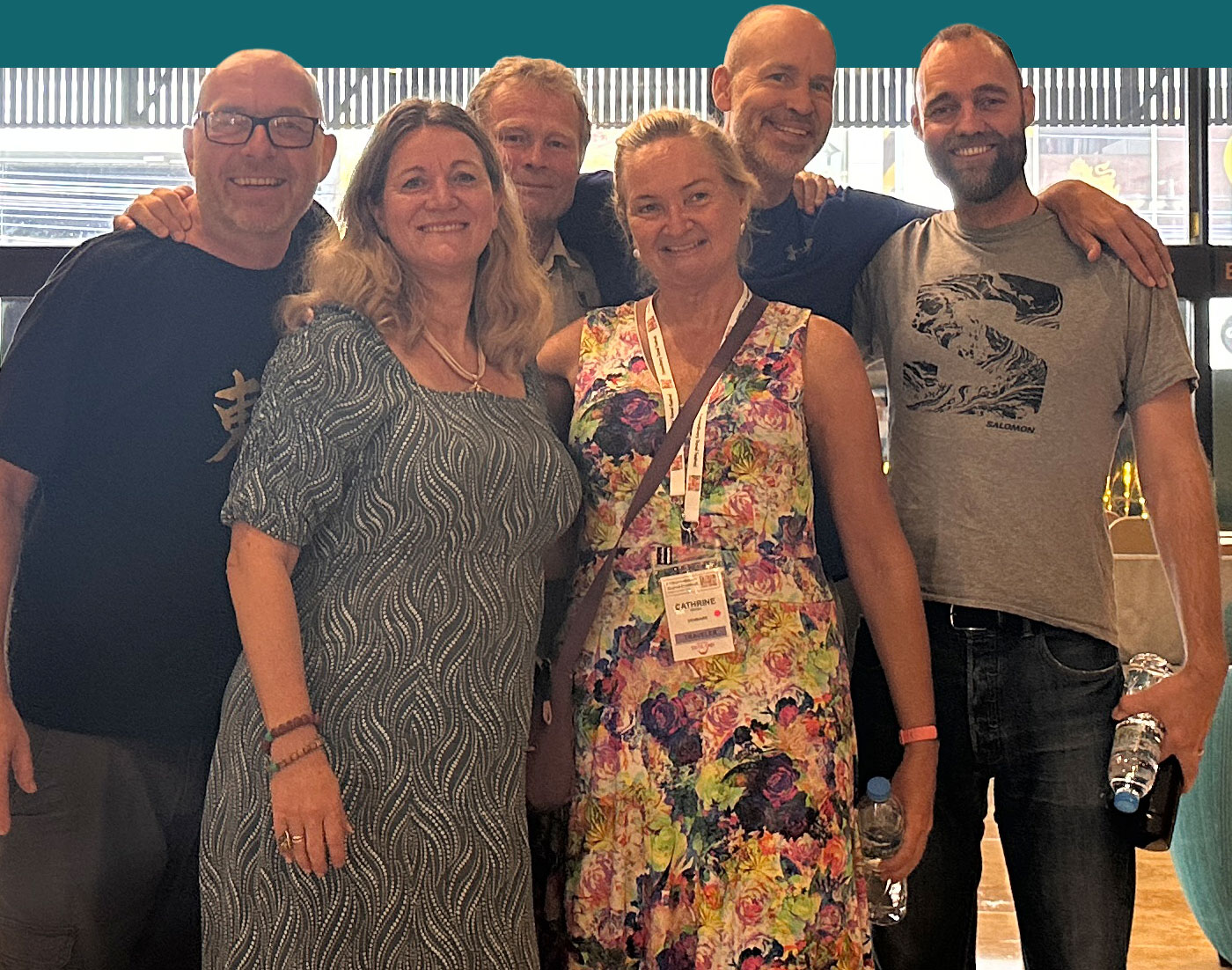Exploring the resilience and determination of Ukrainian communities, especially those in Kharkiv, is an essential step towards understanding the human side of global conflicts. The city’s journey from bearing the scars of war to showcasing Ukrainian pride is a testament to the power of cultural identity and human resilience.
This is not just relevant to international travellers but to anyone keen on understanding the dynamics of global affairs and the impacts of war on human lives. These stories from Izyum and Kharkiv serve as reminders of the strength of the human spirit and the power of determination even in the most challenging times.
Rebuilding Izyum
Izyum is a city in the Kharkiv Oblast (region) of Ukraine, estimated to be around 53,000 residents. It’s approximately 127 kilometers (79 miles) southeast of the second largest cities in Ukraine, Kharkiv.
In 2022, the Battle of Izyum in Ukraine was a pivotal and harrowing event in the ongoing conflict. It began when Russian forces targeted Izyum, a key city due to its strategic position near supply routes. It took a month for Russian forces to take control of the city nut it fell into Russian hands in early April, marking a significant moment in the war. Izyum was occupied for six months but was retaken in a major Ukrainian military success. Both battles for Izyum left many dead and much of the city in ruins.
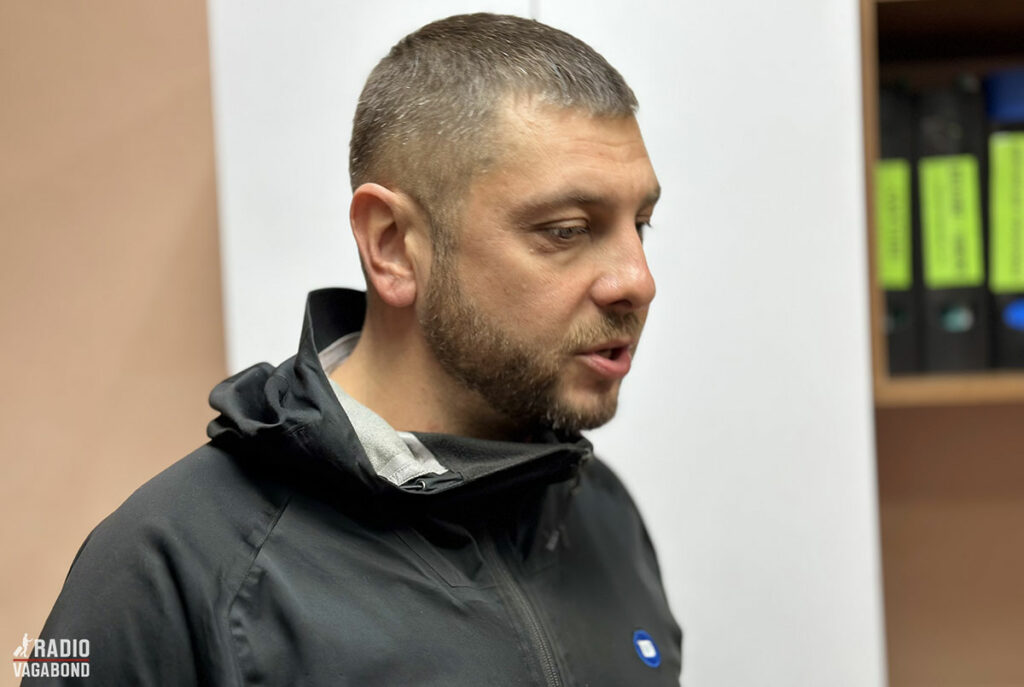
In Izyum, we met the head of a public non-profit organisation called “The Right Direction”. His name is Volodymyr Zelenskyi. Yes, that is his actual name.
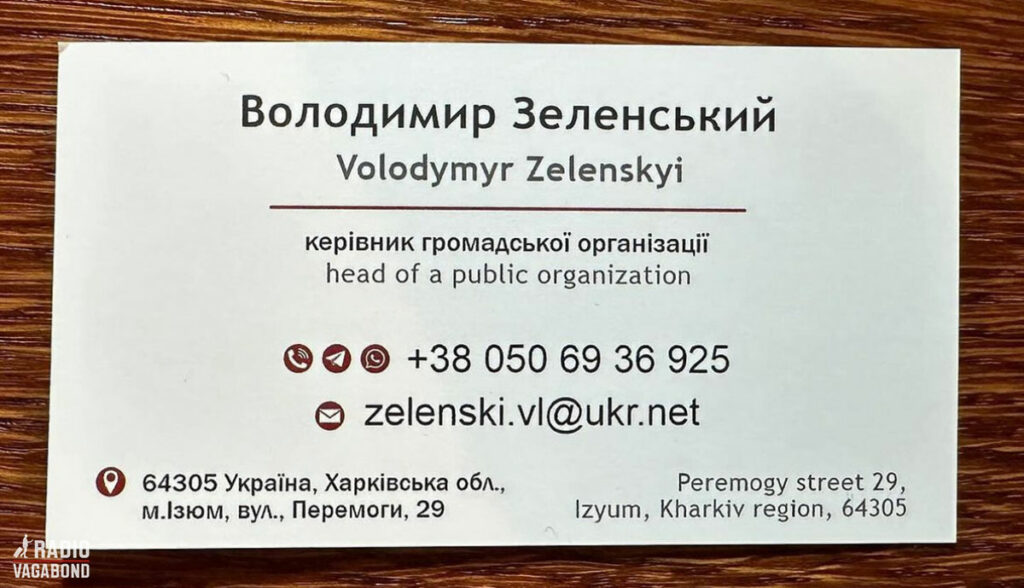
The organisation was founded in 2018 – so before the invasion. The main object back then in peace times, was to improve the life of the youth of Izyum. After the start of the full-scale invasion, their priorities changed. The started focussing on helping civilians and local soldiers.
Helping evacuating people
During the occupation, life in Izyum was drastically altered. The city, once bustling with life, faced severe destruction. Buildings crumbled, streets were deserted, and the sense of community was fractured under the weight of war. The occupation wasn’t just a military takeover; it was a period of profound hardship for the locals. Essential services were disrupted, and the fear of violence was a constant companion.
The biggest priority for “The Right Direction” in the early days of the invasion was to help with evacuation from Izyum, because the frontline was moving closer and closer fast. Izyum was occupied for six months and then came the liberation in September 2022. Ukrainian forces launched a counteroffensive, successfully reclaiming Izyum. This victory was more than a military triumph; it symbolized hope and resilience. However, liberation did not erase the scars of occupation. The city, though freed, was a shadow of its former self. Buildings lay in ruins, and the task of rebuilding lives and infrastructure loomed large.
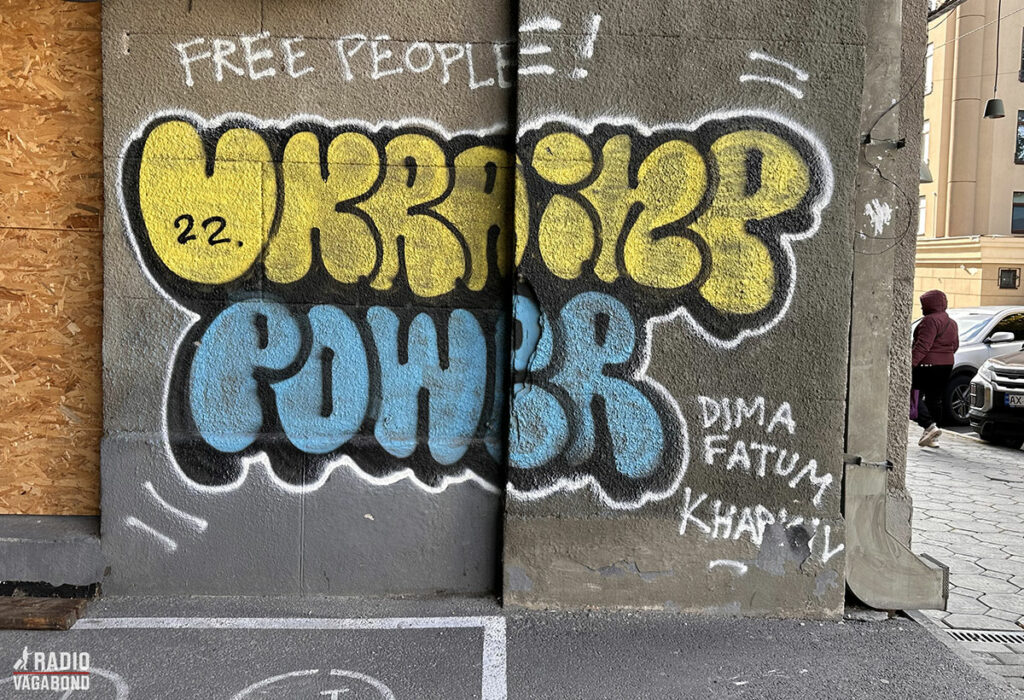
After the liberation the main objective for Volodymyr and the NGO was helping the local people with reconstruction of their houses and apartments. They were helping building walls, fixing roofs, and installed new windows. With little resources they were able to make many places acceptable for living again.
Now, where the most basic needs to survive and live are covered, they are now focusing more on the children and the youth if Izyum. They are organizing events and conducting educational work with young people – understanding that they will be the leaders of the local communities in the near future.
The Toll on Human Life was Devastating
Civilians, caught in the crossfire, faced unimaginable losses. Families were torn apart, and the fabric of daily life was irreparably damaged. Stories of loss, resilience, and the struggle to survive under occupation paint a picture of a community pushed to its limits.
Despite the relief of liberation, the challenges were immense. Rebuilding the city, both physically and emotionally, became a priority. The resilience of the Izyum residents shone through as they began the slow process of rebuilding their lives amidst the remnants of war.
The Battle of Izyum is a stark reminder of the brutal realities of conflict and its lasting impact on communities. It’s a story of loss, resilience, and the unyielding spirit of a city determined to rise from the ashes of war.
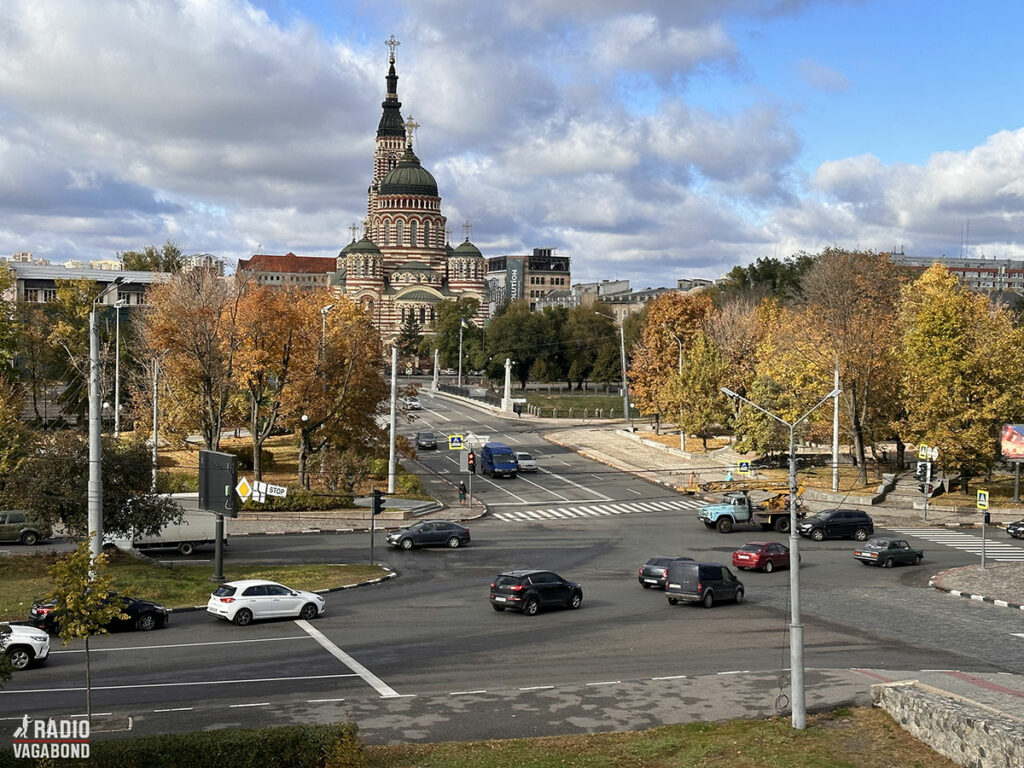
Curfew in Kharkiv
After an eventful day just south of Kharkiv and witnessed the effects of the Russian attacks, we drive back to our hotel in the center of Kharkiv.
It’s a city very close to the frontline where they get missile alerts every day. But despite that we decided to go to a bar after dinner. We knew that we had to be back at the hotel before 11pm because that’s when the curfew sets in.
So, we started walking the 1.2 kilometre at around 10.30pm. And then we got lost. Not only didn’t we have Google Maps because we turned off the location settings on our phones. Something I talked about this in the previous episode. But also, there were no lights on in the city. No streetlights. No lights from windows. It was eery and weird walking through a city the size of Copenhagen at 10.30 at night and it being completely dark. Luckily, we managed to find it and walked through the doors of our hotel at 10.58. Just two minutes before curfew.
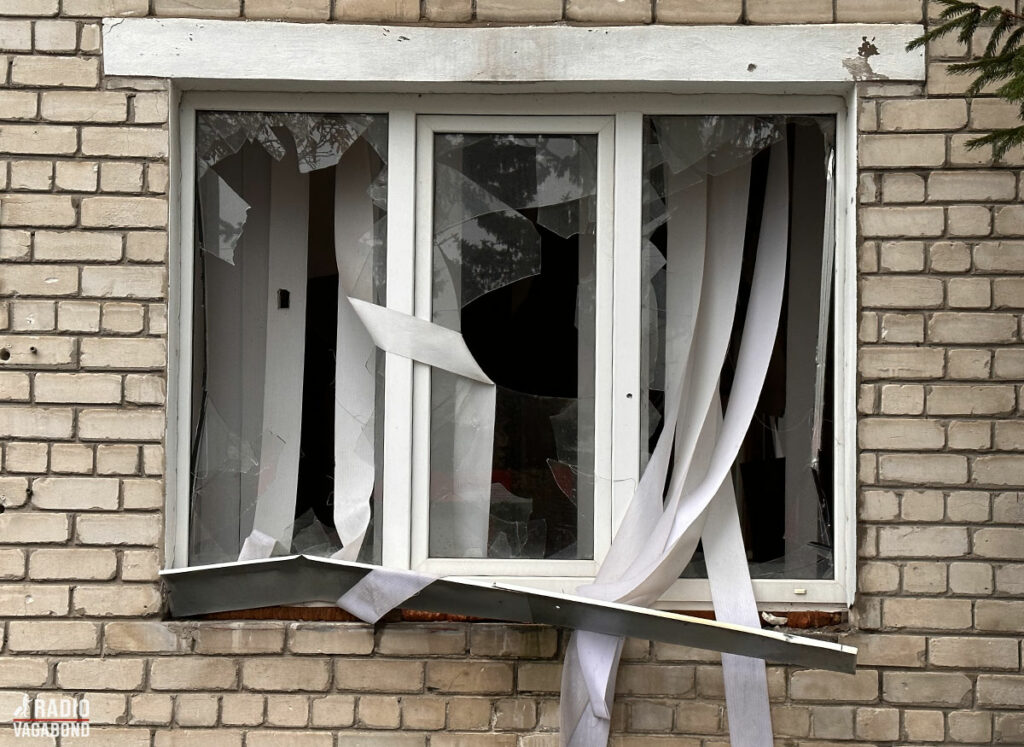
Seeing the Effects of the Missile Attack
Remember from the first episode from Ukraine – this is just 50 meters from where a missile hit just ten days earlier. It blew out the videos of our hotel and left many other buildings damaged. In the morning, I walked around in that street and made a video for TikTok and Instagram.
@radiovagabond I’m in eastern #ukraine🇺🇦 and staying where a misil hit a few weeks ago. #ukrainewar #ukrainewarrussia #nomad #traveltiktok ♬ original sound – Palle Bo
From Soviet influence to Ukrainian pride
Kharkiv, Ukraine – a city shaped by a complex past, wrestling with its own evolution. You see, it’s shedding its Soviet skin, embracing Ukrainian pride like never before. The change is palpable, my friends. I mean, we’re talking about folks switching from speaking Russian to proudly conversing in Ukrainian, a shift that echoes a deeper cultural awakening.
In the midst of this transformation, Kharkiv stands as this intriguing blend of history and modernity, grappling with the aftermath of war while rewriting its narrative. It’s a city in flux, navigating its way toward celebrating Ukrainian heritage and traditions.
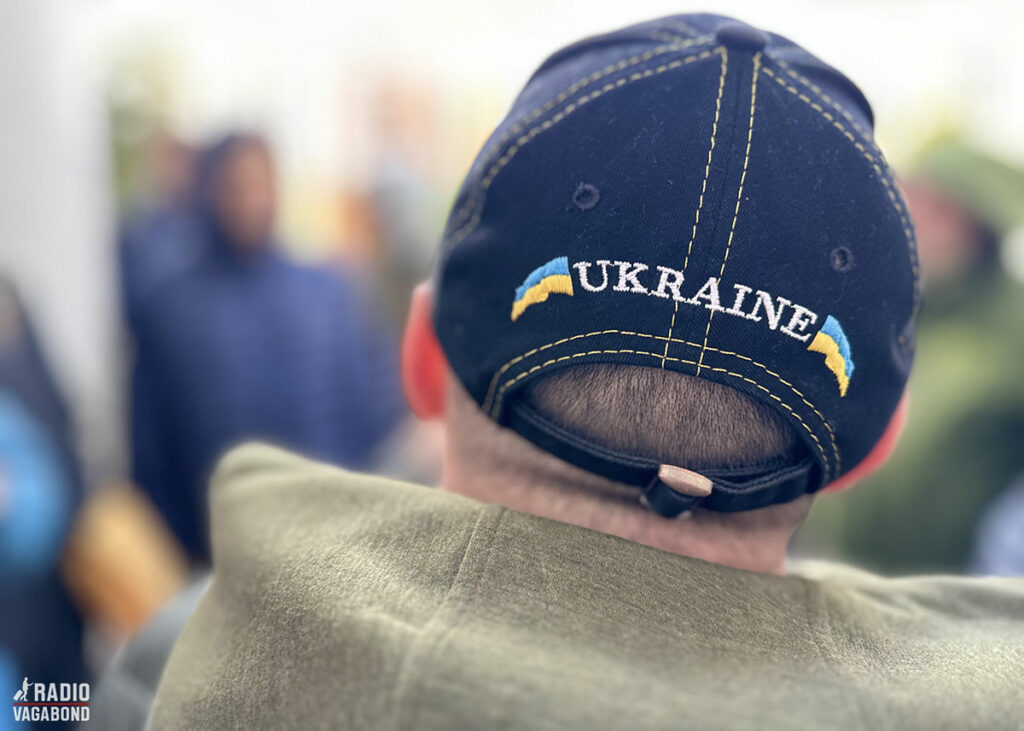
During our journey, we witnessed this evolution first-hand. The cityscape was transforming, shedding its Soviet-era architectural influence for designs that spoke volumes about Ukraine’s vibrant cultural mosaic. And the people? Oh, they were in sync with the city’s heartbeat. The younger generation, especially, was making a statement – rejecting Russian sway, embracing Ukrainian language, and proudly embracing their national identity.
Sure, the transition wasn’t always seamless. We saw the older generation struggling, but the determination to adapt and adopt was admirable. It’s all part of Kharkiv’s fascinating story – a story of resilience and reclamation.
Despite the challenges – be it communal hurdles or infrastructural barriers – Kharkiv pushes forward. Their spirit, their resilience, it’s contagious. It’s a testament to their unwavering will to rebuild, to carve out a fresh identity while honouring their cultural roots.
And you know what struck me most? It’s not just Kharkiv. There are countless cities out there, each with its own tale of resilience, waiting for pioneers to unearth, experience, and share. Kharkiv’s narrative, a beacon of hope in uncertain times, inspires us to witness and learn from these stories of strength and tenacity.
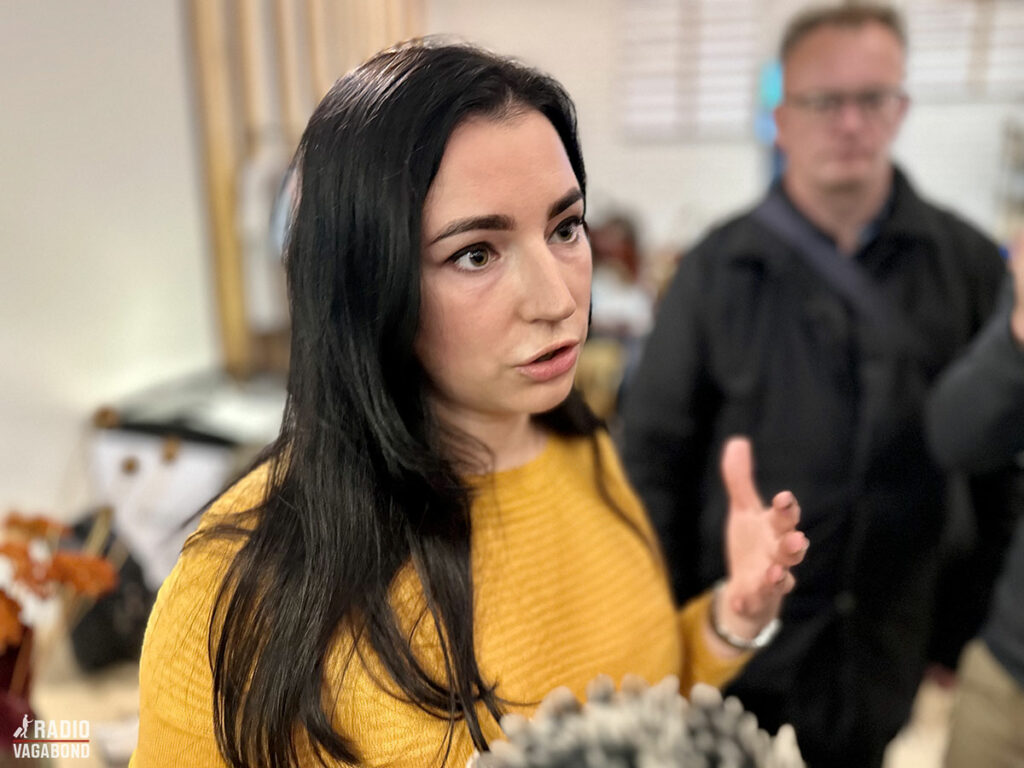
Tourism in Kharkiv Not Easy
In the morning we met Julia Zghurska, who heads the tourism efforts. She talked openly about the struggles they faced due to the war and the pandemic, yet she remained optimistic.
She told us that we were the first group of travelers visiting Kharkiv since early 2022. I asked he of her job has been difficult the last couple of years.
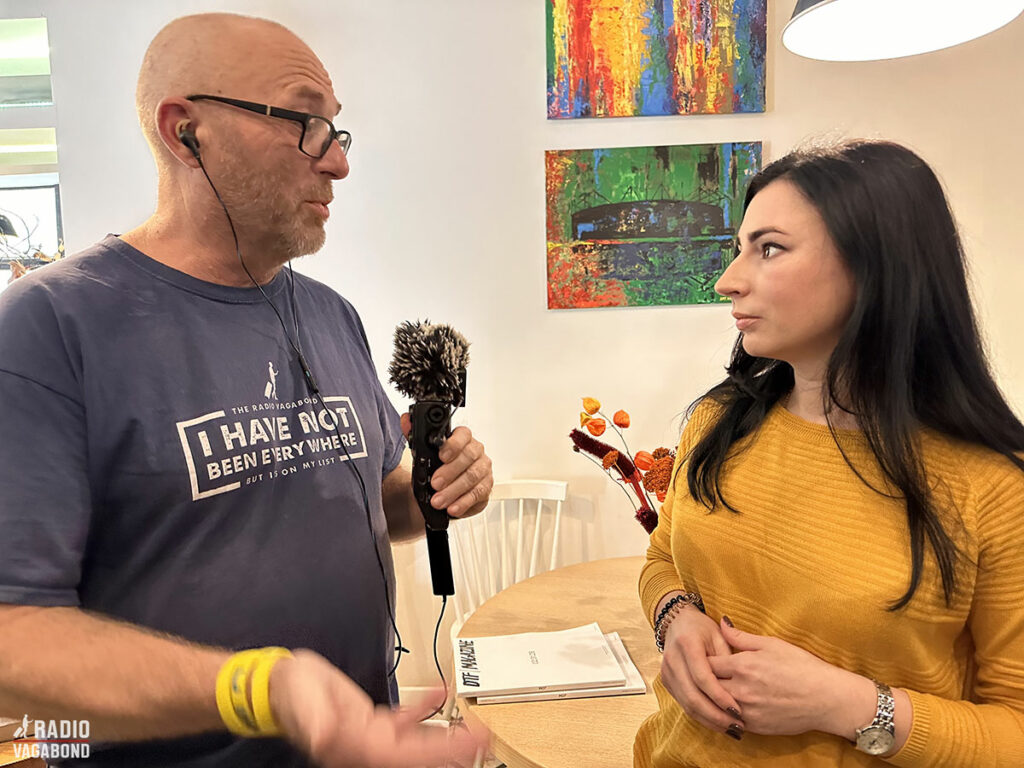
“Actually, yes, because of COVID and because of the war. So, it’s a difficult period, not for Kharkiv, but also for other Ukrainian cities. We do have diplomats visiting and they are also a kind of tourists.
Now our main task to make these people fall in love with my city and not with ruins. Not with the feeling of danger or something else, but with people and with the beauty of my Kharkiv. Actually, I think that the city is unique with our people.
Now I want all journalists and people who come to Kharkiv to speak to people who were here from the very beginning of this awful war, because they are so brave and those people, they can tell things so people can understand the bravity of Kharkiv citizens.
So, I want tourists who come to Kharkiv see our Ukrainian soul, see that Kharkiv is a Ukrainian city with brave people.”
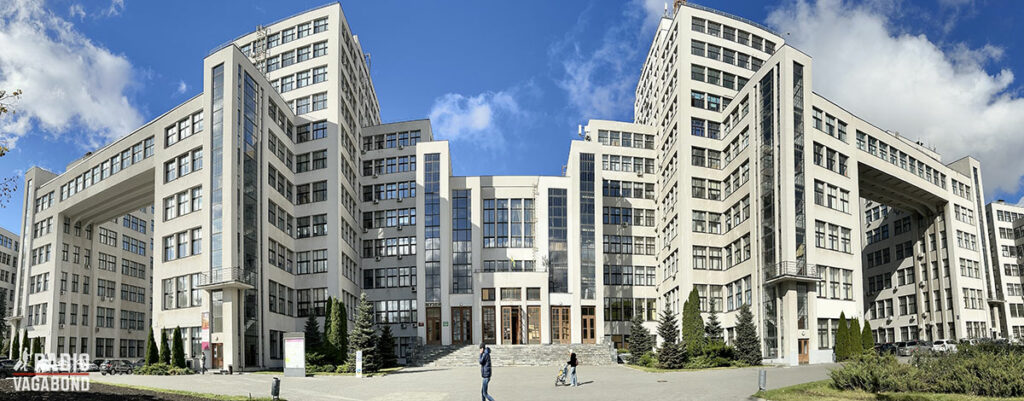
Julia also mentions that their cultural heritage will be interesting. For instance, she feels that the Derzhprom building located on Freedom Square in Kharkiv, the biggest square of Ukraine, should be in UNESCO site.
It’s built in the constructivist style, and it was the first modern skyscraper building in the Soviet Union upon its completion in 1928.
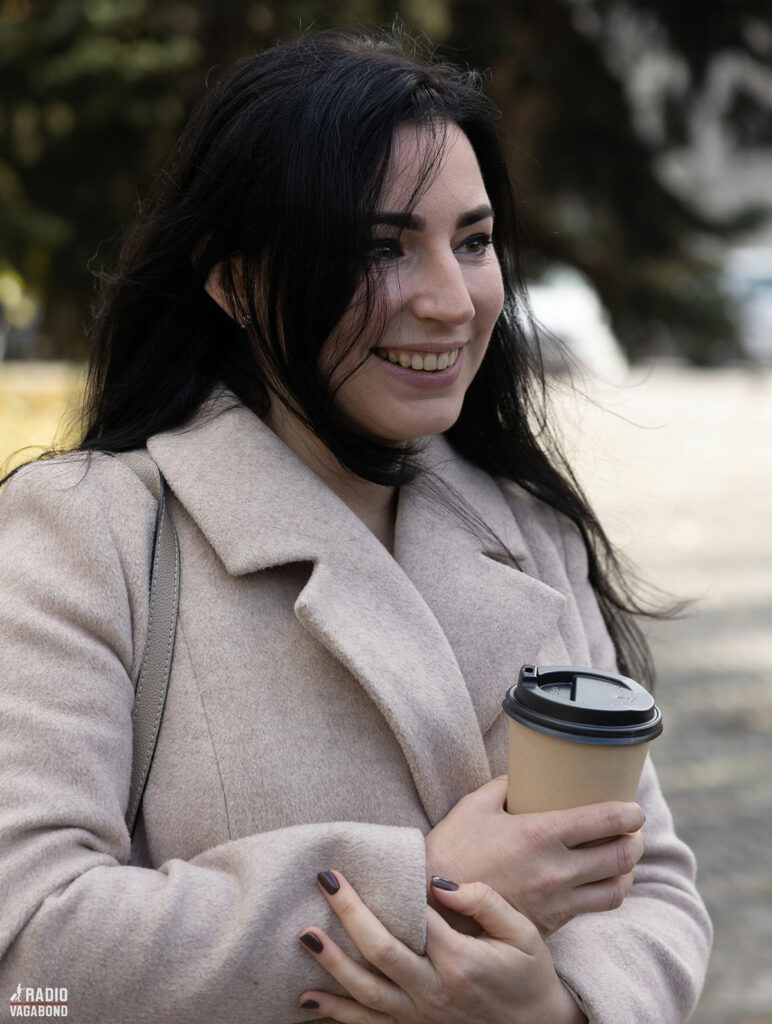
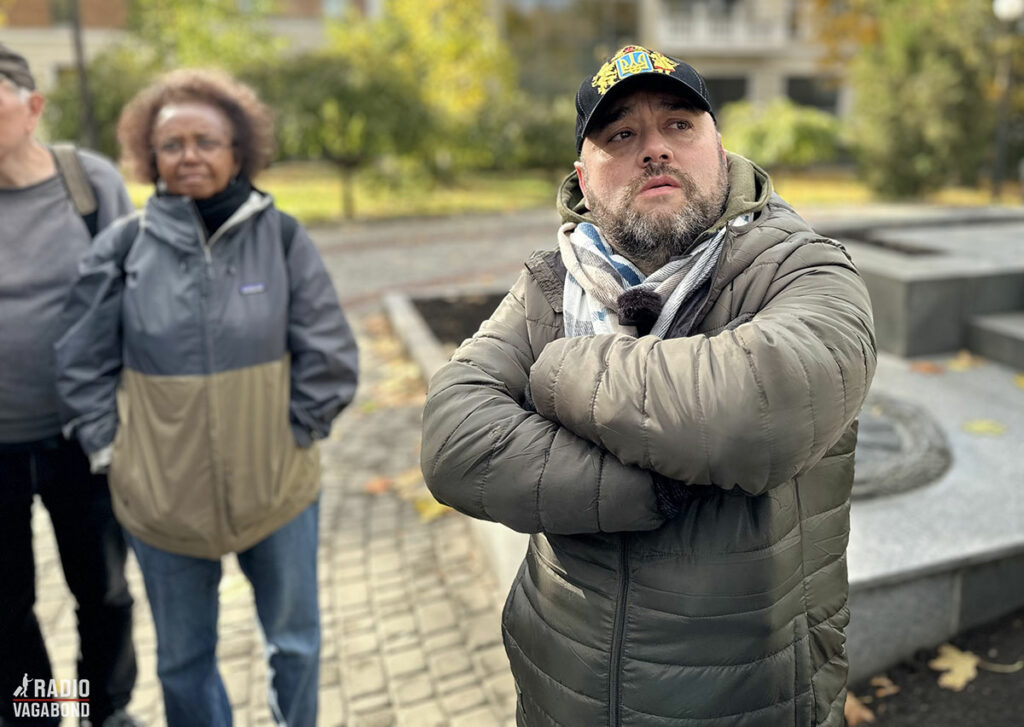
Resilience and hope amidst the destruction: Kharkiv’s story
In the middle of all the chaos and brokenness, Kharkiv’s spirit shines through like a guiding light. This city in Ukraine has been through a lot, especially after the war, but there’s this strong vibe of determination and hope that you can feel everywhere. It’s like the people there are saying, “We’ve been knocked down, but we’re not staying down.”
I couldn’t help but notice the signs of destruction, scars from the war that were hard to miss. But despite all that, there was something resilient in the air. People were getting back to their daily lives, carrying on with a sense of optimism. Even kids were playing and laughing with ruins around them, showing that even when things are tough, there’s this strong will to make things better.
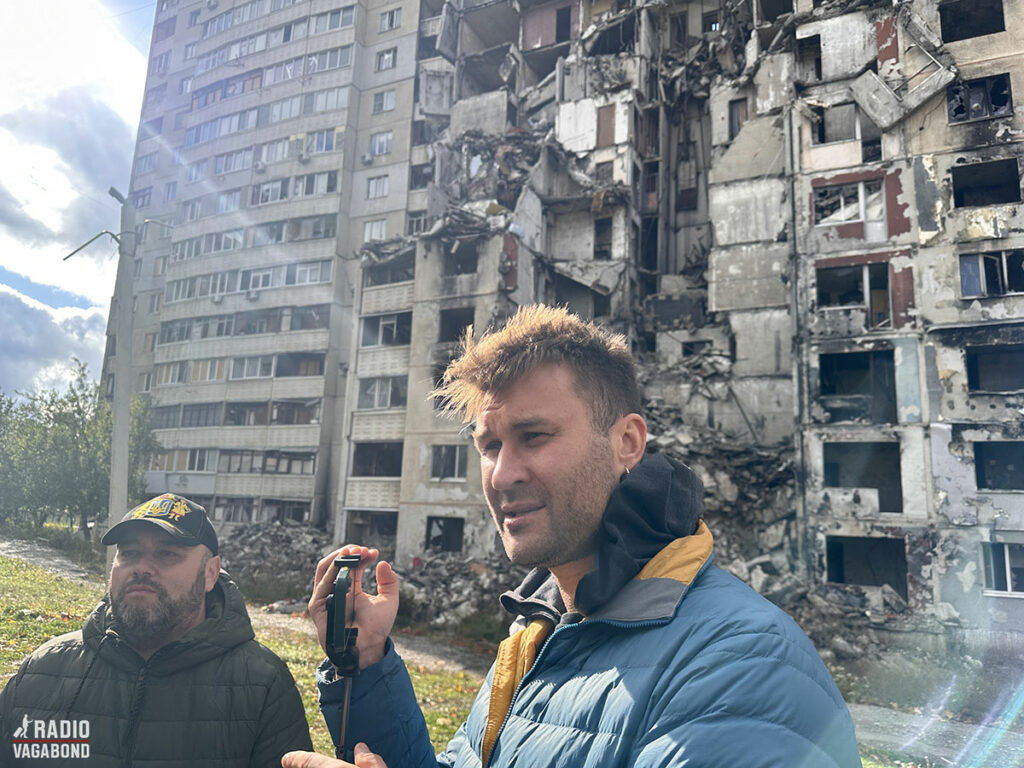
Little things, like folks collecting water from public spots, showed more than just survival. It was a sign of hope, a reminder that life goes on even in tough times. In Kharkiv, resilience and hope aren’t just words; they’re what keeps the city alive, even in the face of all the destruction.
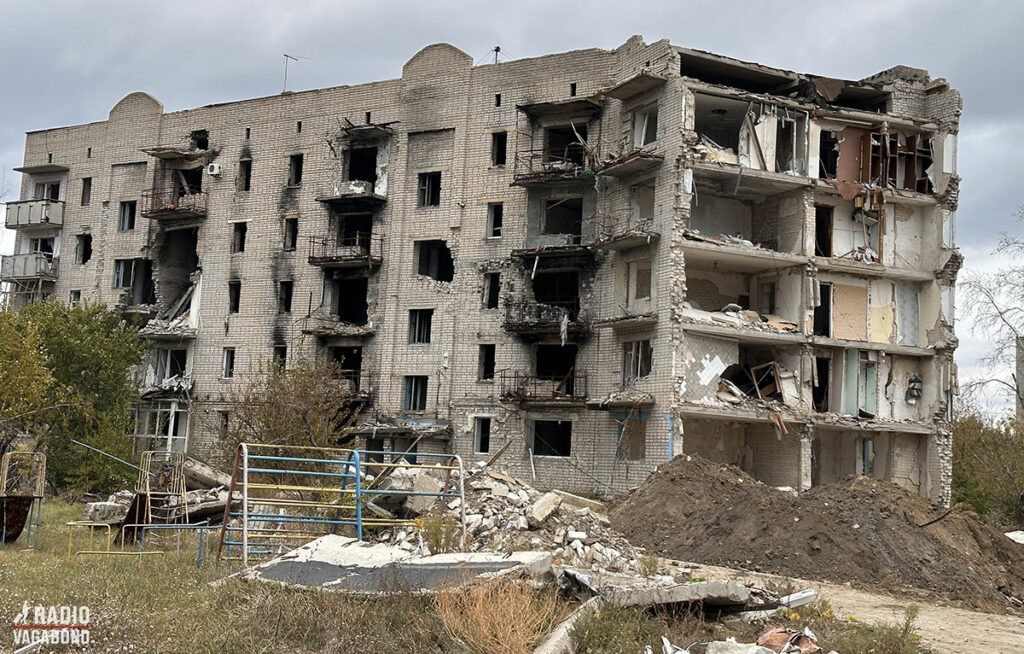
This city tells a powerful story about how people come together and refuse to let hard times break them. It’s a lesson for all of us: tough times might come, but they can’t take away our hope or our ability to bounce back. Kharkiv stands as proof that even in the worst situations, there’s always a chance to rebuild, to start anew, and to show resilience – a testament to a city and its people who won’t let hard times defeat them.
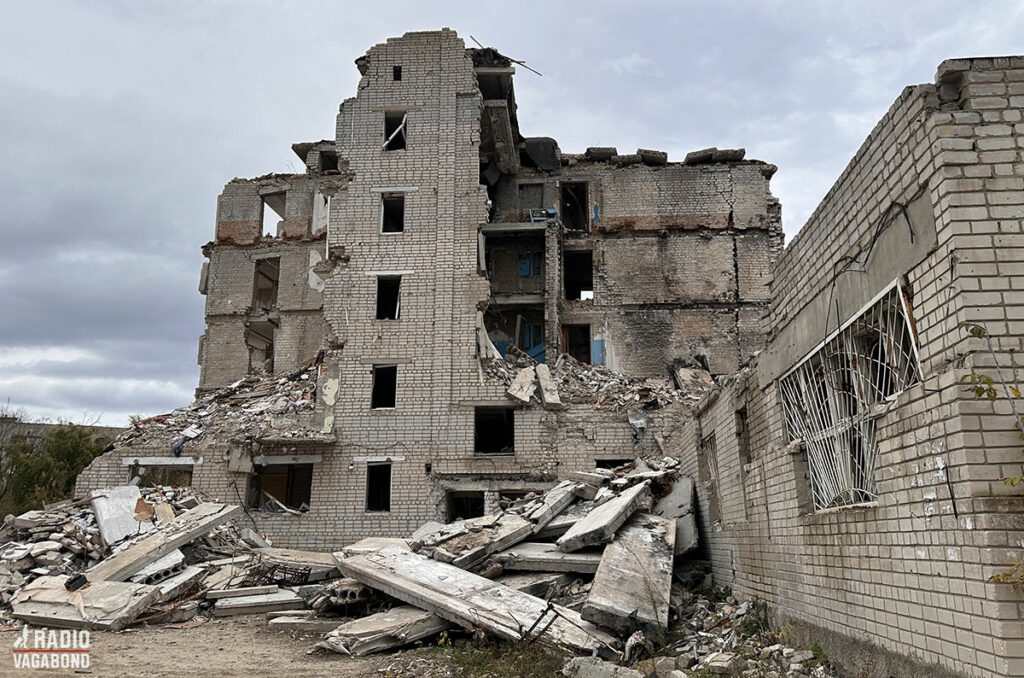
Meeting the Children of Kharkiv
And we see a lot of life in Kharkiv that day. And especially on our next stop where we go to a basement where about a dozen young children aged 3 to 7 were drawing and being occupied by a group of volunteers. With kindergartens closed, parents who try to live with a bit of normalcy need help from NGOs more than ever.
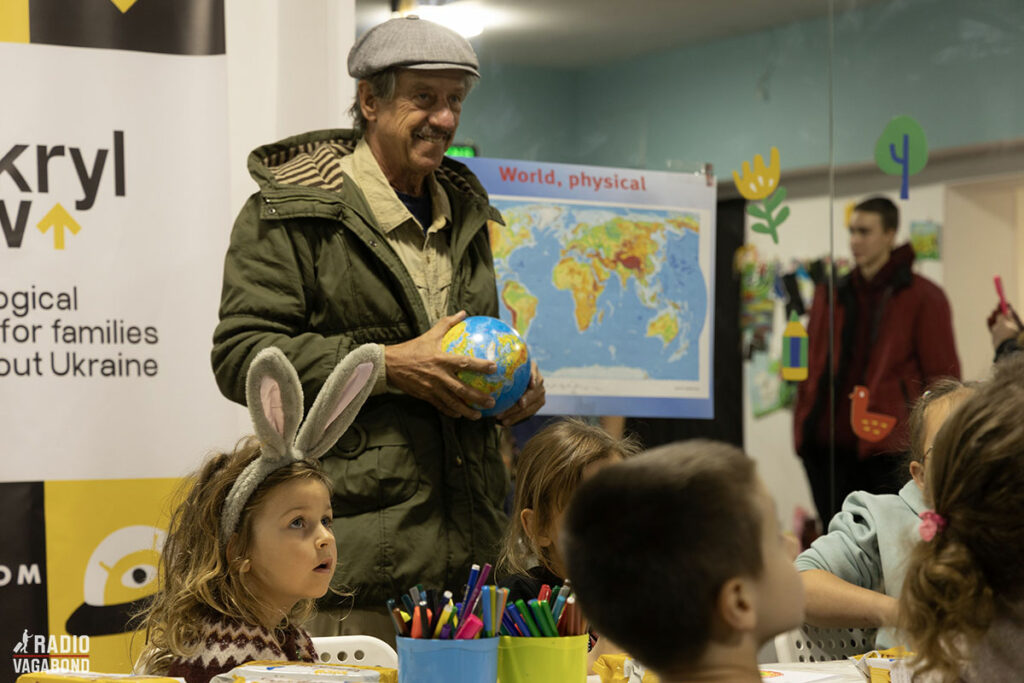
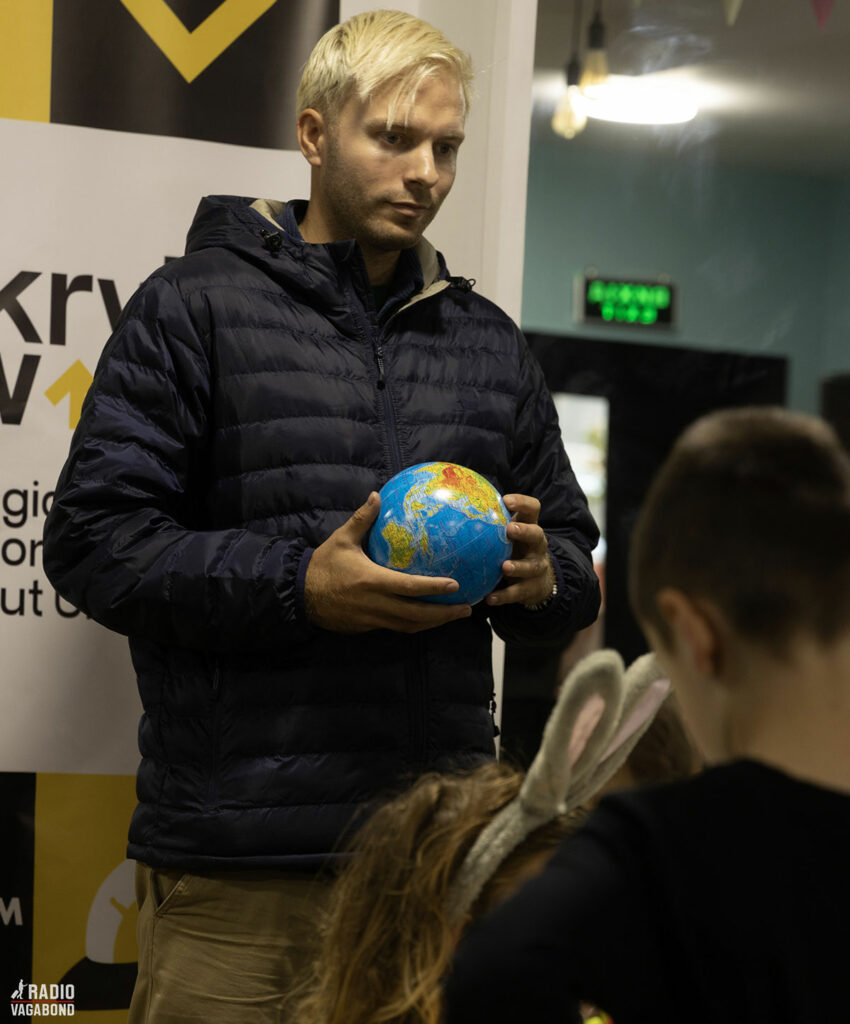
We gave the kids a bit of a geography lesson as we all introduce ourselves and talked a bit about where we’re from. They even had a globe so we could show them where we’re from. The kids were wonderful, naturally curious, and playful, and the visit was heart-warming.
At the same time, I couldn’t help thinking about children having their childhood stolen in a meaningless war, that they don’t even understand. Well, none of us really understand it to be honest.
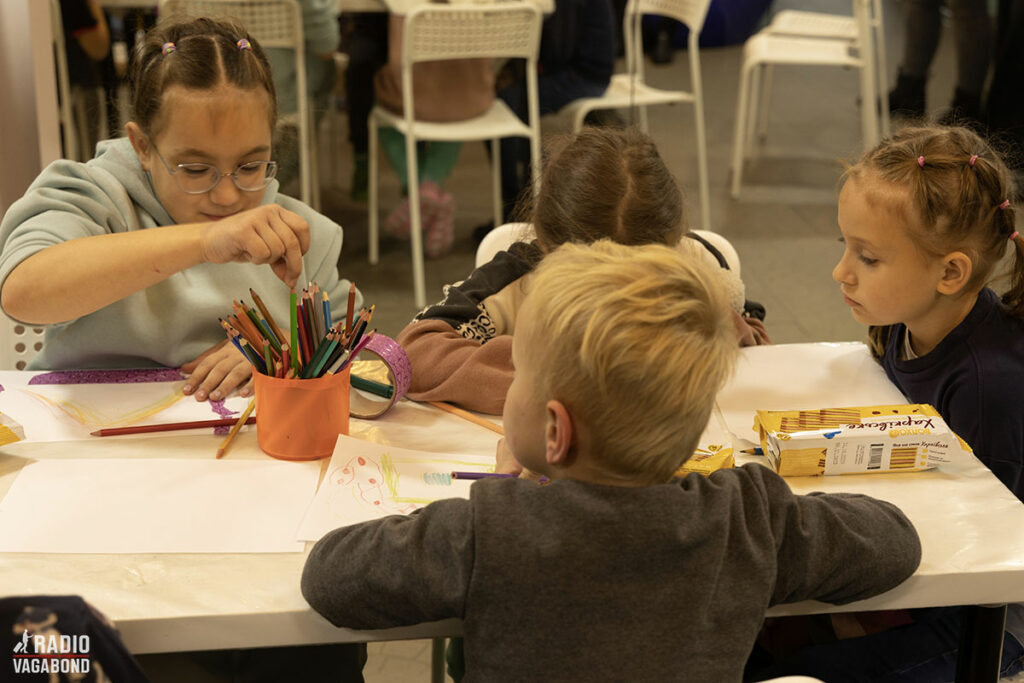
After playing and having fun with the kids for about an hour, we all got a beautiful drawing from them. Something I will treasure for a long time and have framed when I get a home and a wall to put it on at some point.
Impacts of war on Kharkiv’s infrastructure: A first-hand account
When we joined Max Rozenfeld, an artist and architect for a walk around Kharkiv, we saw for ourselves the toll that war had taken on this once-beautiful city. The streets that used to buzz with life now bore the scars of ongoing conflict – damaged buildings, shattered homes, and entire areas like Saltivka feeling the weight of war.
Despite all the destruction, what stood out was this unwavering spirit of hope. Sure, the city was rebuilding slowly, but it was more than that. It felt like we were witnessing a story of resilience and renewal, not just destruction.
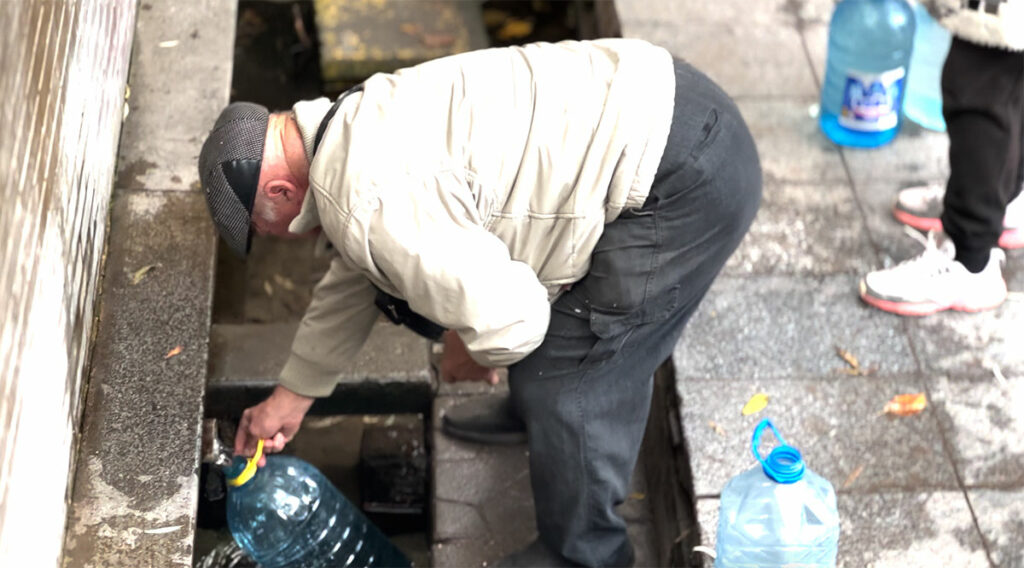
Optimism and Resilience
Julia, the heads of tourism, talked openly about the struggles they faced due to the war and the pandemic, yet she remained optimistic. And then there was Max, who shared the history of Saltivka and his own experiences documenting the area. Their stories painted a picture of a city refusing to give in to despair.
What struck me the most wasn’t just the visible damage; it was the invisible strength of the people. Despite everything they’d been through, they were holding on to each other, believing in a brighter tomorrow.
Kharkiv’s story is a testament to the human spirit’s resilience. Yes, the war hit its infrastructure hard, but the people here didn’t let it break them. Every day, they’re rebuilding, preserving their heritage, and keeping their community alive.
It might not be evident at first glance, but beneath the rubble lies a city that’s not giving up. Kharkiv’s resilience echoes loudly, reminding us all that even in uncertain times, hope and determination can shine through.
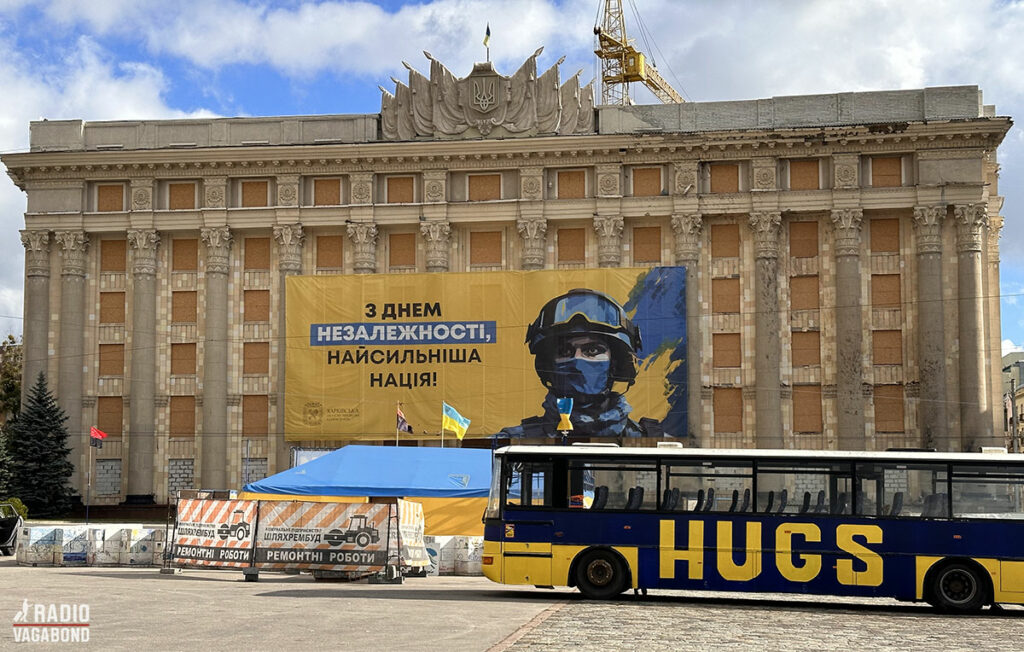
Getting a Missile Scare Leaving Kharkiv
When it was time to leave Kharkiv – just as we got off the bus and have to walk the 500 meters to the train station the air alarm goes off – which means “seek shelter now”.
We’re running as fast as we can to get underground at the train station. And out of the corner of my eyes, I notice that the local people don’t seem to react. It’s like they don’t even hear it. Earlier in the day I spoke with Julia about this.
”Actually, it’s true. We are not going to basements anymore, unfortunately, because we’ve gotten used to these rocket attacks. Also, we have a lot of situations when rockets are coming before the alarm. So, it’s the main problem because we are very close to the border with Russian Federation, and we have less than 40 seconds for rockets to come from Belgorot in Russia to Kharkiv. So, when we have alarm all over Kharkiv, we understand that rockets are already here. Of course, people in hospitals and critical infrastructure buildings, are trying to go to the basements.”
We managed to get underground at the train station safe and sound. But it was a scary end to our visit in Kharkiv.
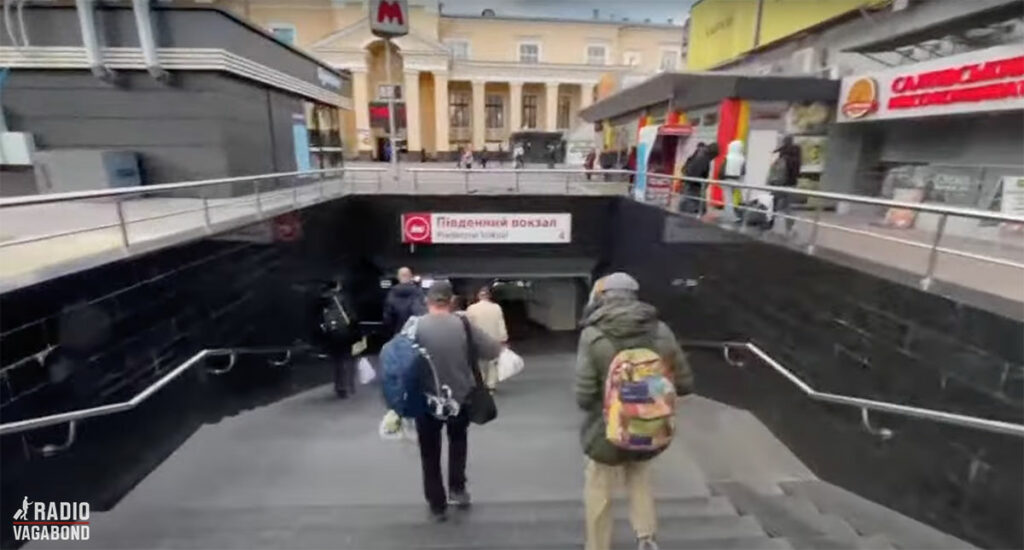
Next stop: Kyiv
I know that I promised you in the latest episode that we’ll reach Kyiv in this one. But there was just more to share than I expected, so we didn’t have time for that. Now we’re on the train there so I promise that you’ll get that in the next episode.
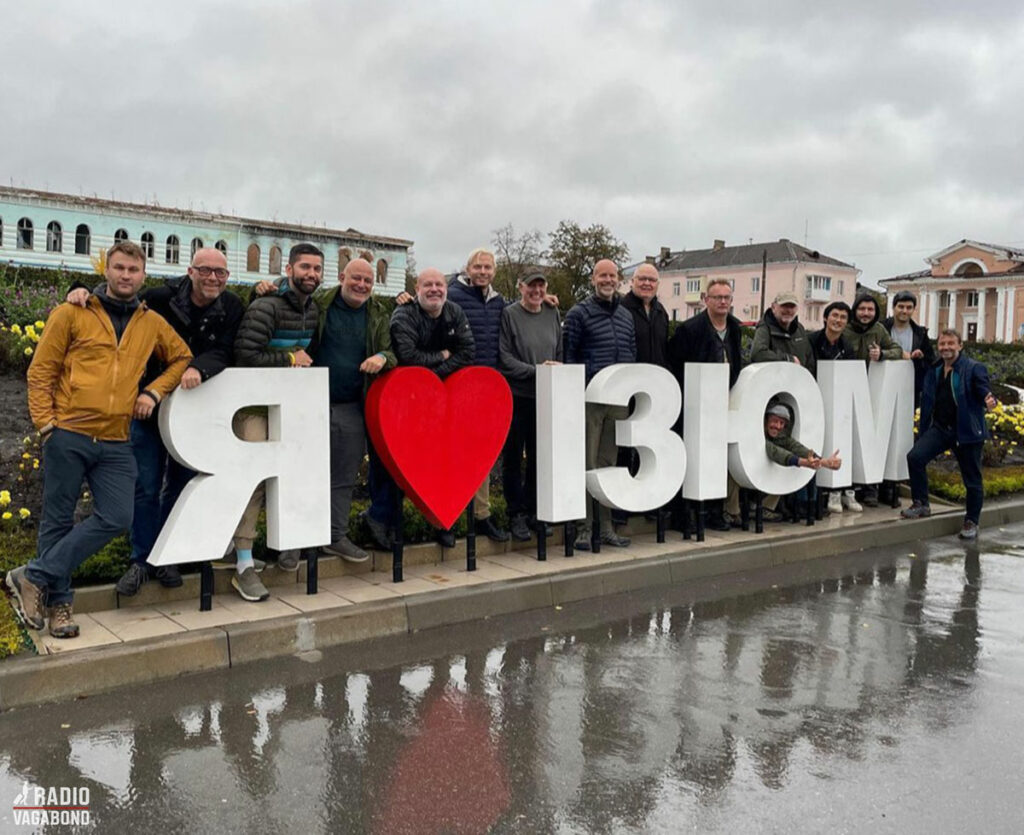
My name is Palle Bo, and I gotta keep moving. See you.
Additional reading:
Read the NomadMania Trip Report here.
Read an interview with Harry Mitsidis about the visit here.
JEG VIL GERNE HØRE FRA DIG
Fortæl mig hvor er du, og hvad du laver lige nu, mens du lytter til denne episode. Du kan enten sende mig en email på lytter@radiovagabond.dk eller udfylde formularen her på Radiovagabond.dk.
Eller sende en stemmebesked ved at klikke på banneret herunder.
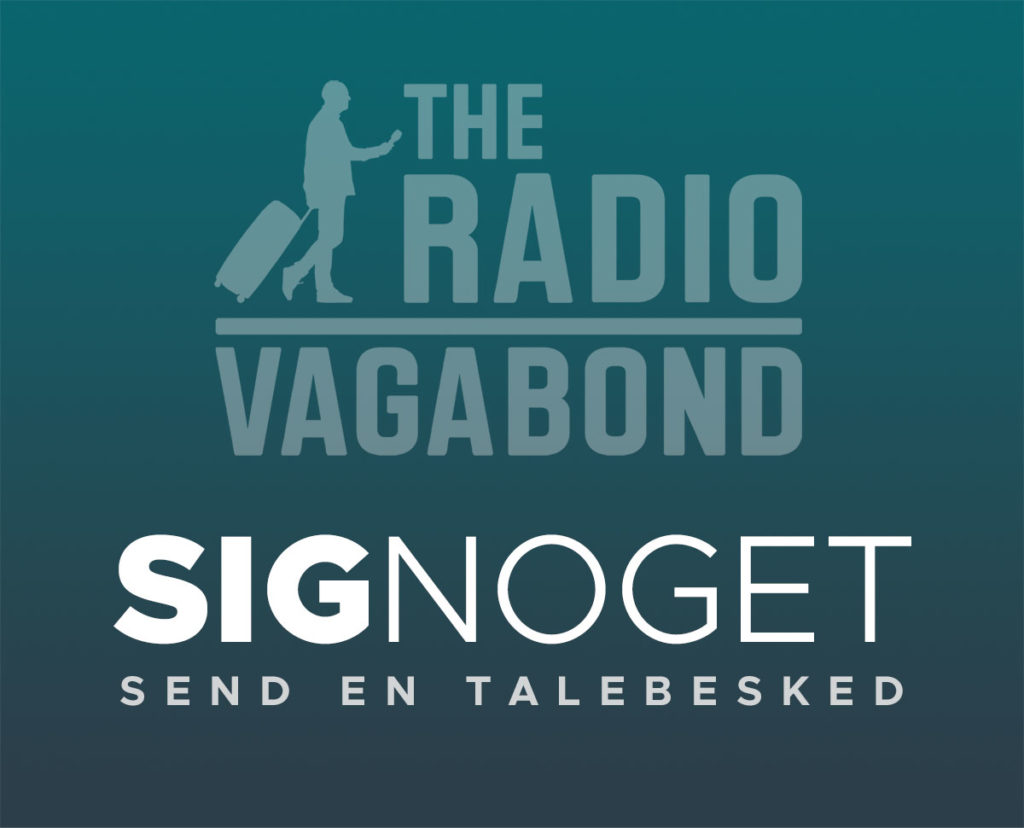
Uanset hvad du gør, vil jeg meget gerne høre fra dig. Det er altid sjovt at høre, hvem der sidder ude på den anden side af højttaleren.
DEL MED EN VEN
Har du en ven, der også er interesseret i at rejse og få inspiration til at komme ud og opleve verden? Så del denne episode. Send en besked eller ta’ telefonen og fortæl om den. Du kan også bare klikke på en af de farvestrålende knapper herunder.
SPONSOR
Som altid tak til min sponsor, Hotels25.dk. Det er et sted, du altid kan finde de bedste priser på overnatning rundt omkring i verden. Og det er garanteret den bedste pris.
RADIOGURU
Radiovagabond er produceret af Radioguru, som også kan hjælpe dig med at starte din egen podcast.
